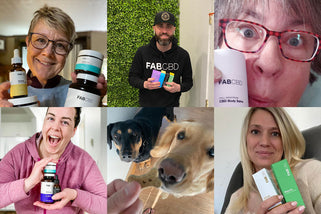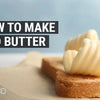As the popularity of CBD continues to grow, so do the number of brands and products that are flooding into an already saturated market. There are so many options out there that it can be overwhelming, confusing, and frustrating trying to decide which products are best and what brands are the most reputable. The good news is that once you spend some time researching products and brands, you’ll be able to tell almost immediately which are top-notch and which are inferior. And while there are a great number of products to choose from including topical creams, salves, gummies, and softgels, some consumers tend to get confused over the difference between CBD oils and tinctures.
Even though oils and tinctures are two different products entirely, some consumers mistakenly believe they are one in the same. A big reason for this is that both oils and tinctures are taken in very much the same manner. However, there’s a big difference between the two in the way they’re extracted, how they taste, and much more. Our post will take a deep dive into the differences between CBD oils and tinctures, as well as give you some helpful pointers for choosing the best products for your goals and needs.
What is Cannabidiol?

Cannabidiol, or CBD, is a compound that’s found in the hemp and marijuana varieties of the cannabis plant. To date, a wealth of scientific research studies have been conducted on CBD and what it can and cannot do for health. Even though more research is needed, a good many consumers still take some type of CBD product as part of their regular daily supplement regimen. As we mentioned earlier, CBD, terpenes, phytonutrients, and other cannabinoids are extracted from both the hemp and marijuana plant and are turned into a vast array of products. Two of the main, most common, and most popular products are CBD oils and CBD tinctures.
CBD Oil
CBD oil is created when oil is extracted from the hemp or marijuana plant’s flowers, leaves, stalks, and stems. Once the oils are extracted, they are blended into a carrier oil like olive oil or coconut oil. Most reputable brands use the industry preferred clean CO2 extraction process that requires advanced and expensive technology, machinery, and labor. Therefore, the end products are some of the most potent oils that are also high-priced. In fact, cleanly-made, pure CBD oils contain a wealth of cannabinoids, terpenes, flavonoids, proteins, fatty acids, and vitamins and minerals.
CBD Tinctures
Tinctures are very different from CBD oils. CBD Tinctures are herbal extracts that are made by using alcohol and water to remove cannabinoids, terpenes, and other phytonutrients from the hemp and marijuana plant. While a CBD oil is blended with carrier oil such as coconut or hemp seed oil, tinctures are a suspension of CBD in 60-70% distilled alcohol. Because tinctures are extremely bitter in taste, they are often packed with flavorings and other additives to improve the flavor profile. Some common additives include peppermint, cinnamon, sweeteners, flavorings, and even vegetable glycerine. Some brands also blend in vitamins and/or other components to help further promote a tincture’s health incentives. Interestingly, the alcohol used to craft CBD tinctures also extends the product’s shelf life for as long as three to five years.
What Are the Main Ingredients of CBD Oil vs. CBD Tinctures?
As we stated earlier, CBD oils are made when the hemp or marijuana plant’s oily resin is blended into an oil base. Some common ingredients found in CBD oils include carrier oils, essential oils, flavorings, and other supportive ingredients like minerals and vitamins.
Consumers should be aware that CBD oils are stronger than CBD tinctures because of their makeup. CBD tinctures can be composed of distilled alcohol, herbs, vitamins, essential oils, sweeteners, water, and chlorophyll, while CBD oils simply contain hemp extracts, carrier oils, and/or natural flavorings.
Other Differences Between CBD Oils and CBD Tinctures
Oils and tinctures both contain CBD and have many things in common. One of the main aspects that they have in common is the way that people take them. There are, however, a good number of differences that you should be aware of.
-
Overall Flavor
CBD tinctures and oil share a common earthy taste, however, it's said that tinctures have a stronger, more bitter flavor profile. CBD oils have a much milder flavor because a lot of the natural bitterness is diluted by the carrier oil that it’s blended in. Many brands offer flavored CBD oil and tincture options because of this earthy taste.
-
The Base That the CBD is Blended in
CBD tinctures are made using a 60-70% alcohol base while CBD oils are made using carrier oils like coconut oil or olive oil.
-
Product Shelf Life
Tinctures tend to have a longer shelf life than oils because of that alcohol base. In tinctures, the ethyl alcohol that’s used acts as a preservative that gives the final product a shelf life of anywhere from three to five years. Because CBD oils are made using coconut oil, hemp seed oil, or olive oil, they typically do not last as long as tinctures. Natural oils generally spoil after a set amount of time, therefore after a long time, your CBD oil will start to show signs that it’s going bad. If you want to make your CBD oil last as long as possible, then you should buy oils that come in dark brown bottles and then store them out of direct heat and sunlight.
CBD Oil or Tincture: Which is Better?
At the end of the day, it all comes down to personal preference. Consumers who don’t particularly like the taste of alcohol, and who want more of a consistent oil potency from batch to batch, will opt for CBD oil. However, if you’re in the market for a product that has an extended shelf life, then you might want to opt for a CBD tincture. If you’re sticking to a regular daily CBD regimen, then shelf life shouldn’t matter that much to you in the long-run because you’ll end up using your oil within an acceptable time frame. Preference, flavor, personal sensitivities, and more can play into your decision to choose an oil over a tincture and vice-versa.
How CBD Oils and Tinctures Work
As mentioned before, oils and tinctures are taken sublingually, and therefore they work faster than gummies or other ingestible forms of CBD. Because they don't go through the digestive system, they can fast-track into your bloodstream by way of the capillaries under your tongue. Once the CBD is absorbed into the bloodstream and takes a ride to the endocannabinoid system where the hemp cannabinoids start interacting with various receptors. Different cannabinoids have different effects on those receptors and on other mechanisms within the system, all related to bringing the body back into homeostasis.
What’s the Best Way to Take Tinctures and Oils?

Before beginning to use CBD oils or tinctures, you need to remember that there isn’t one set dose that works best for everyone. Additionally, starting low and gradually increasing your dose over time is the best way to go. When taking either an oil or a tincture, you should begin by taking half a dropper full of oil and dispensing it directly under your tongue. When you do this, you’re giving a chance for the cannabinoids to enter into your bloodstream through the thin membranes under your tongue and in your mouth. Hold the oil there for about 60-seconds before swishing it in your mouth and swallowing. When the oil is absorbed through the tissues in your mouth, it’s bypassing your digestive tract, thus avoiding the liver where it will be quickly metabolized.
For example, you can start out by taking half a dropper-full of FAB CBD vanilla-flavored full-spectrum oil in 600mg. Begin by doing this once a day. This equals 10mg of CBD oil a day. After a week has gone by, check in with yourself to see how you’re feeling. It’s also helpful to keep a journal during this time so that you can clearly see what’s working and what isn’t and how you’re feeling throughout the process. After one week, increase your dose if you need to. This time, go up to half a dropper-full of oil twice a day, or 20mg of CBD oil a day. Stick with this dose for another week before deciding if you need to increase again. Stay with this pattern until you’ve found your sweet spot, or the dose that works best for your unique body. Remember, you may need to increase your dose or even your oil potency as time goes on. If oils aren’t your thing, then you can always switch to another product like FAB CBD “Anytime” or “Nighttime” gummies, CBD+CBG Oil, or our soon-to-be-released Complete Cannabinoid Vegan CBD Softgels.
How to Find the Best Quality Oils and Tinctures

The best way to choose any type of product for yourself is to spend as much time as you can researching. In educating yourself about brands, products, and CBD, you’ll be able to spot an inferior product pretty much right off the bat. Knowledge is your best defense against being seduced by cheaply priced products that are made by less reputable brands.
Some of the most important things to look into when it comes to buying oils and tinctures are:
1. Where the Brand Sources its Hemp
Knowing where a brand’s hemp comes from is very important to having an idea about the quality of a product. Reputable brands, like FAB CBD, source their hemp from organic farms in states like Colorado that are within the United States. Hemp that comes from overseas is held to different standards than domestically-grown hemp.
2. Independent Lab Tests
Trusted and respected brands care about the quality of their products and about being transparent with their customers. Therefore, they use an independent third-party lab to regularly test all of their products or potency, the overall THC level, and for the presence of contaminants like heavy metals, fungicides, herbicides, pesticides, solvents, and other chemicals. Per federal law, all hemp-derived products are legal to buy and sell throughout the United States as long as they contain 0.3% or less THC. Reputable brands will also post these lab reports on their websites where customers can easily find them. In looking for a CBD oil or tincture, you should avoid any product that doesn’t have a third-party lab report attached to it.
3. The Product Variety
CBD oils and tinctures can come in either full-spectrum, broad spectrum, or CBD isolate varieties. In order to get the most out of your oil or tincture, you should opt for full-spectrum or broad spectrum products, as they contain all of the cannabinoids, terpenes, and phytonutrients of the cannabis plant. If, however, you have concerns about THC even though there’s only 0.3% or less in full-spectrum products, then you can always choose a broad spectrum option, as all of the THC has been removed. If you’re looking for pure CBD and nothing more, then you will need to go with a CBD isolate oil or tincture. In this variety, all of the plant parts have been removed through a special process and only 99% pure CBD is left.
4. Read Verified Customer Reviews
If you really want a good barometer about a brand, its products, and its customer service department, then you should take some time and read the verified customer reviews that are posted on its website. If a brand doesn’t have any reviews posted, or if they’re hard for you to find, then you may want to skip buying products entirely. Trustworthy brands post any and all reviews right on their websites where customers can easily read them. Additionally, reputable brands will also publish verified customer reviews on their social media platforms. Customer reviews will help you understand what you can expect from a brand including delivery times, customer service responses and how they resolve issues, product quality, and other helpful things. If you notice that a brand is suppressing customer reviews and feedback by limiting customer responses online or by eliminating negative reviews, then this should make you think twice about giving them your hard-earned money.
CBD Oil vs CBD Tincture: The Choice is Yours

Even though oils and tinctures are taken in very much the same manner, they are two distinct types of CBD products. While tinctures have a longer shelf life, oils are more potent and taste better overall. If you’re looking for a product that has a longer expiration date and aren’t too bothered by a stronger flavor profile, then maybe a tincture is a good option for you. However, if you’re searching for something with a milder taste, more consistency in potency, and a stronger phytochemical profile, then choose a CBD oil. Another great aspect about CBD oil is that they are thoroughly filtered to eliminate any unwanted plant matter, unlike CBD tinctures that contain plant compounds and chlorophyll that can bind with the alcohol it’s blended with.
Regardless of which type of product you choose, you should always spend time researching as much as you can about brands and products until you’re satisfied that you can confidently go forth and select a high-quality product from a top-notch brand that best suits your needs. At the very least, you should be looking for products that use organic hemp, have an abundance of positive customer reviews, that care about being transparent and use a third-party lab to test its products, and that create full-spectrum or broad spectrum oils or tinctures that contain a solid spectrum of cannabinoids, terpenes, and phytonutrients. While there is a solid selection of trusted and highly reputable brands on the market, you can always pay a visit to the FAB CBD website to check out our offering of clean, potent, and effective full-spectrum CBD oils that come in an array of strengths and flavors.







